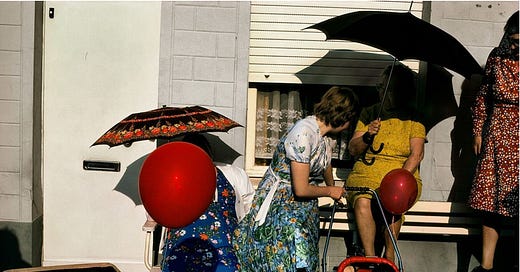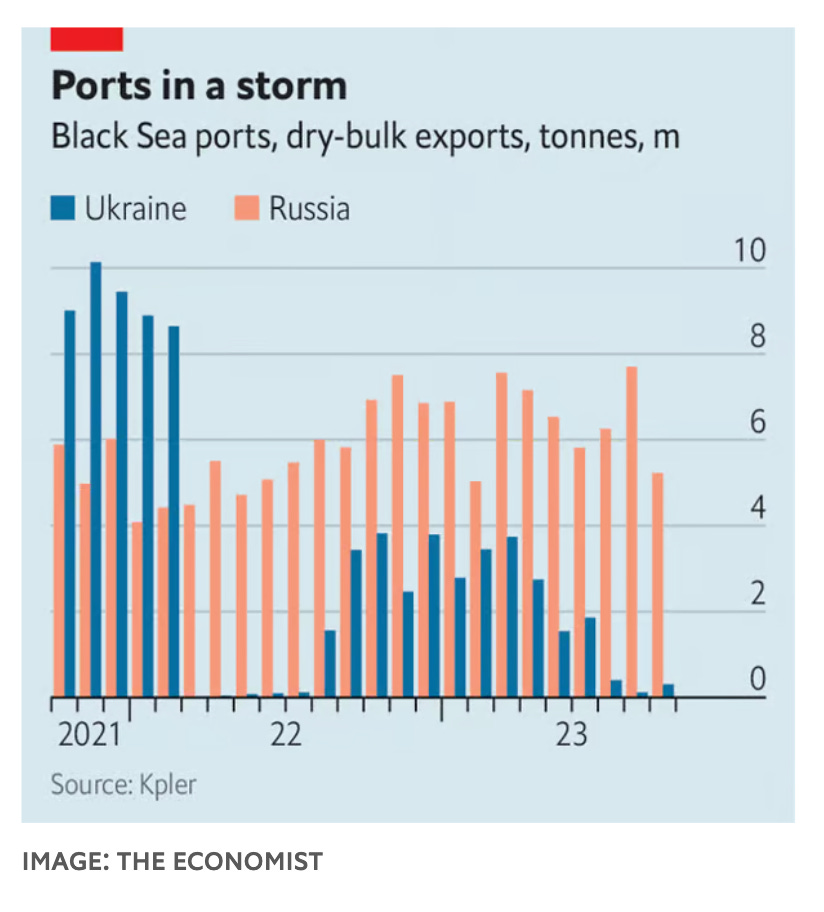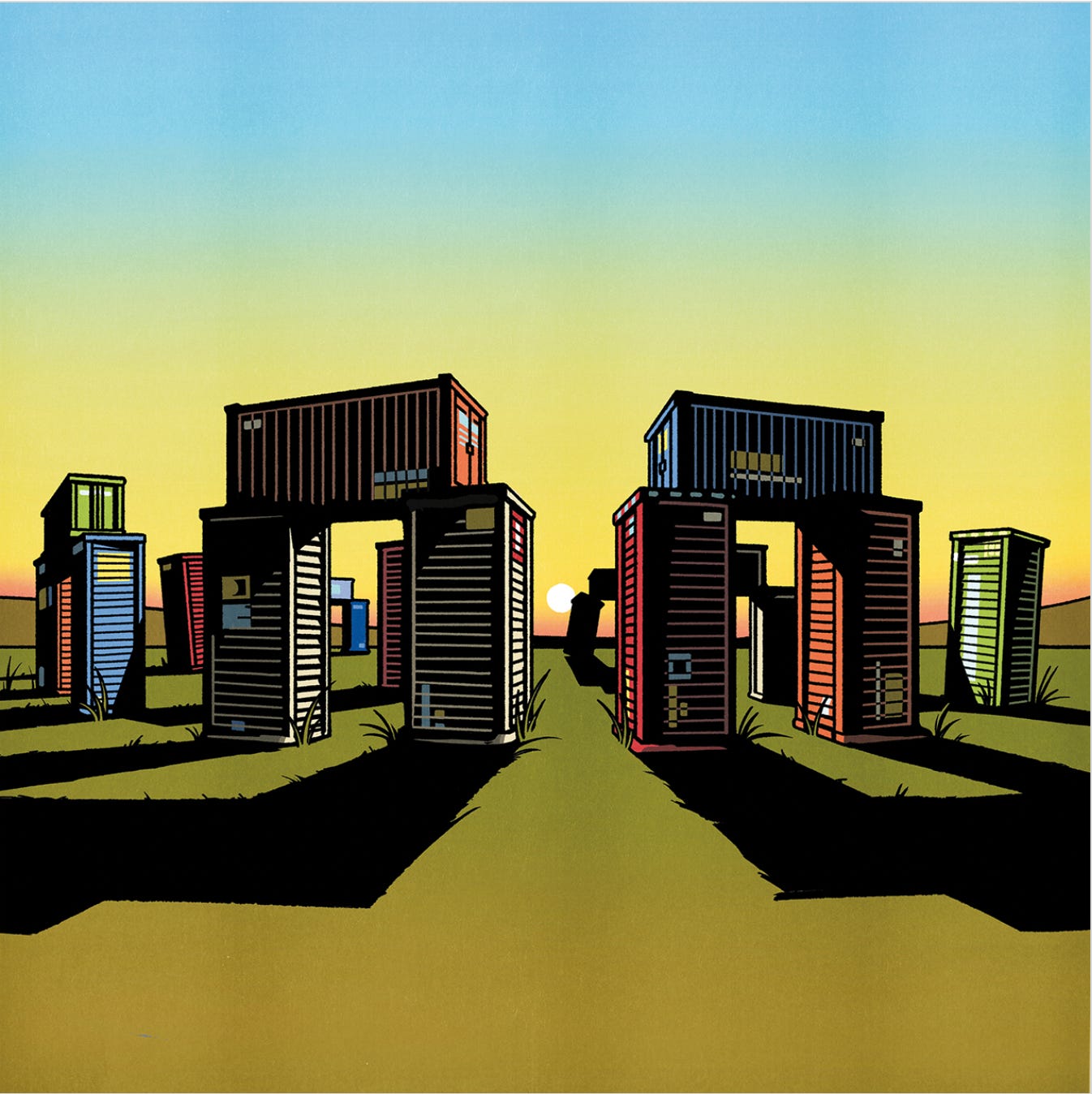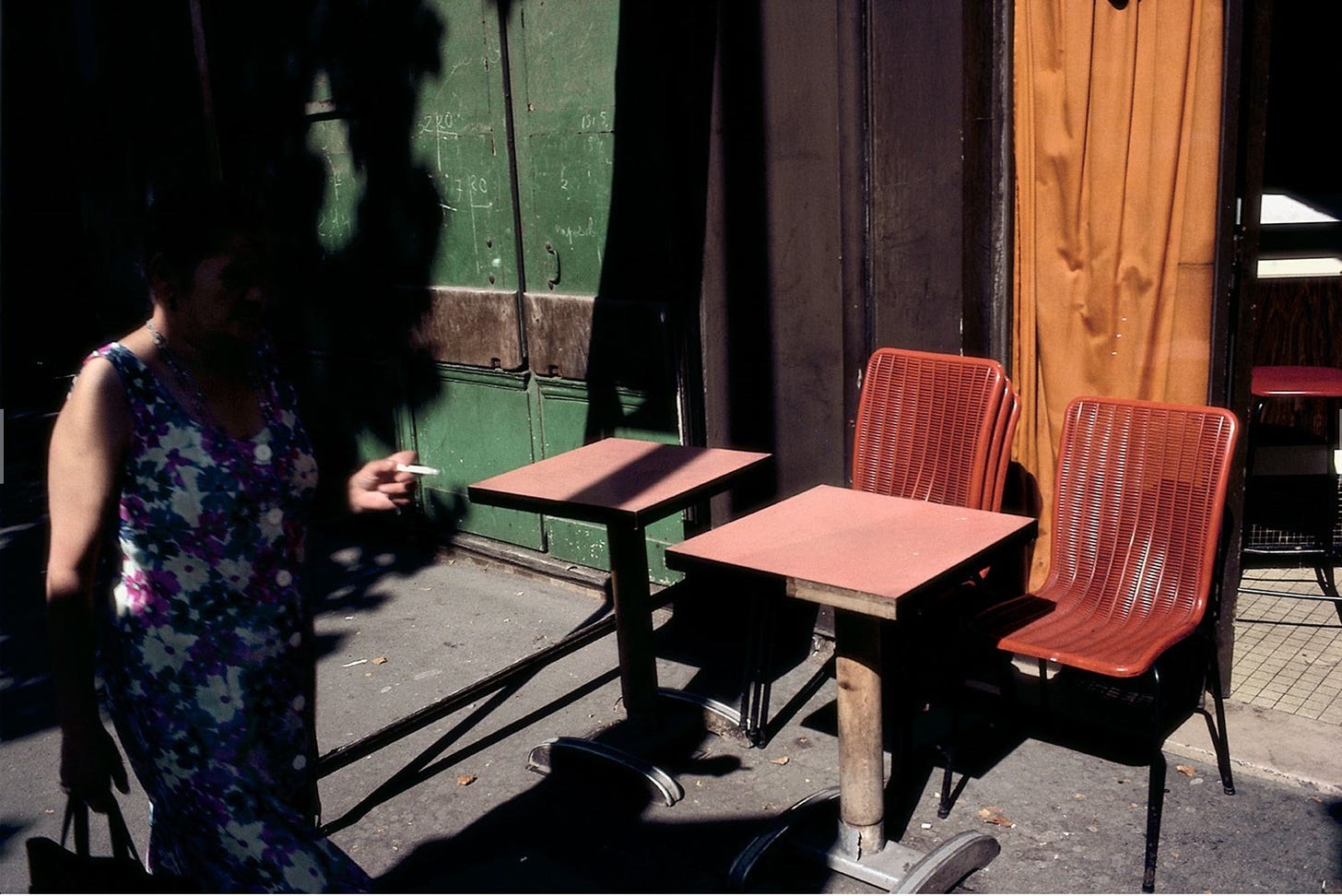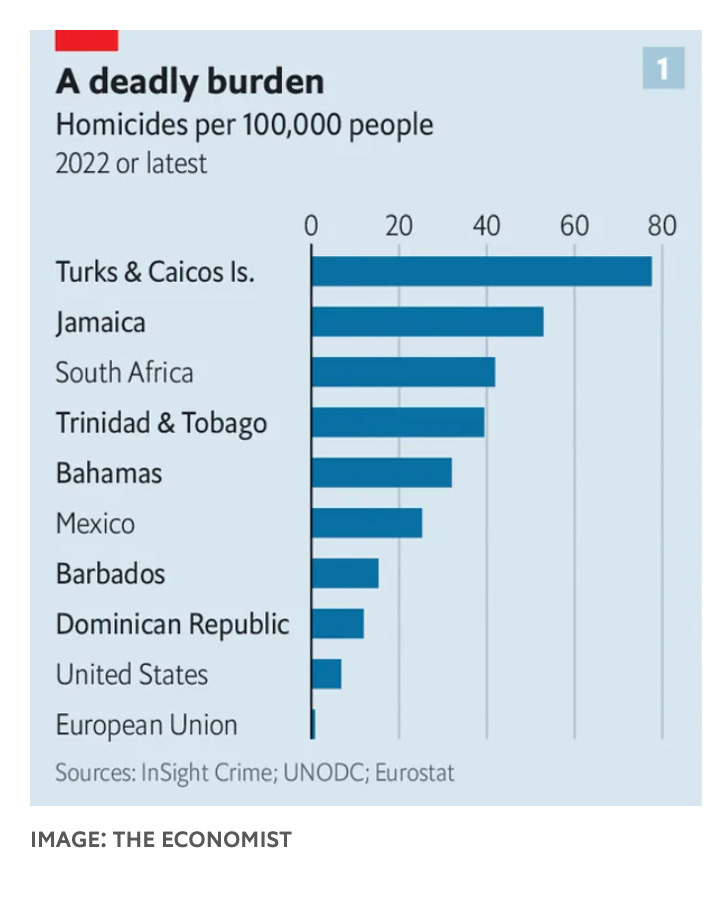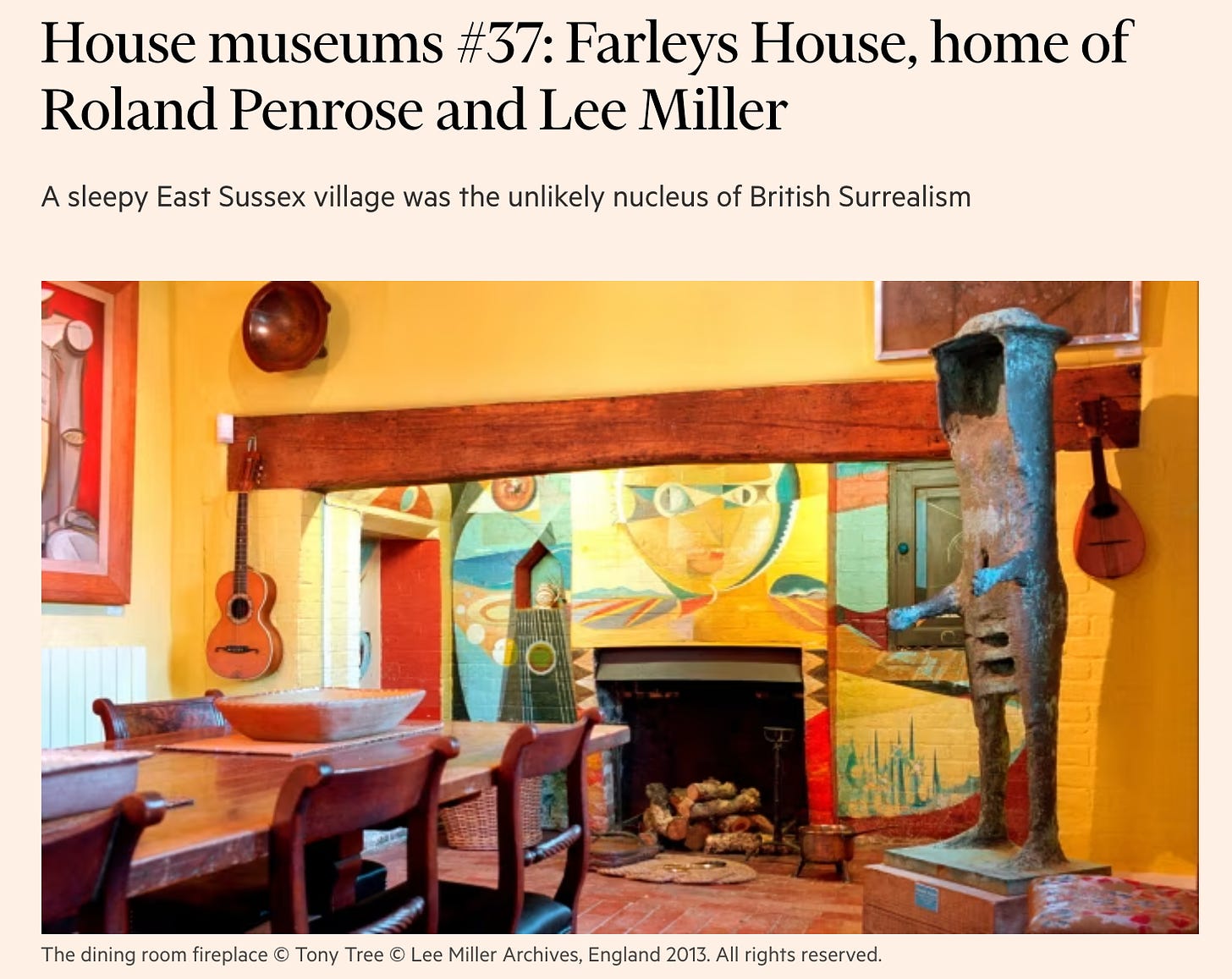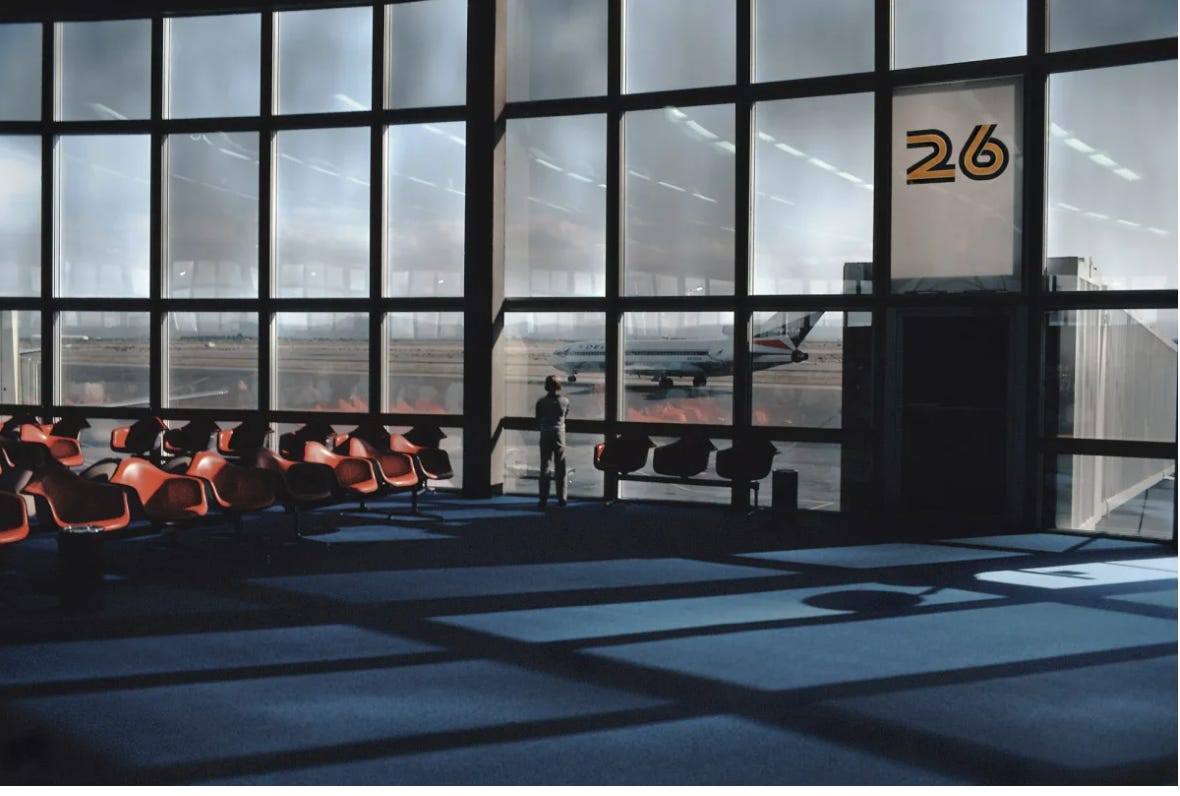Ukraine's surf and turf, gun trade in the Americas, a French panic & British "sewer realism"
Great links, images and reading from Chartbook Newsletter
Thank you for reading Chartbook newsletter.
Initially a fashion photographer, Harry Gruyaert (born 1941) retained his early interest in color through travels to Morocco in 1966 and then across Europe and the Middle East. In this, his 1980s return home, he set out explicitly to find the colors less perceptible to him for seeming less exotic: to provincialize the familiar, and so to see its strangeness. Above: Province of Brabant, Flanders region, Belgium 1988. Source: Another Mag
Glad you enjoy reading the newsletter. What sustains the project are subscriptions from readers like you, who get lots of extra content too.
Ukraine’s surf and turf
For all Marx’s optimism about “the annihilation of space by time” it turns out that such ancient drivers of trade as sea access and working farmland are still crucial:
Before the war, roughly 60% of Ukraine’s exports passed through its ports on the Black Sea. The volume of trade has since contracted dramatically, both because of the Russian blockade and because of the broader disruptions caused by the war to farms, factories and infrastructure. Even when the grain initiative was operating, Ukraine’s exports were a fraction of what they once were.
Source: The Economist
Tumbling renewables
Subscribers only
Some days you don’t get Top Links, because I write analytical essays linking politics and economics instead. To join the supporters club and get the full Top Links service to your email inbox, as well as longer analyses, click here:
Sovereigns and their funds
Subscribers only
Great illustration for a predictable rant by the the Economist about the new protectionism, which they’ve titled, “Are free markets history? The rise of homeland economics”
Harry Gruyaert, Street scene, Paris, 1985
Caribbean killing with American guns
Supply and demand do not always correlate with global lines of wealth of poverty — quite the opposite, often, and it works to reproduce those global hierarchies:
Handguns that sell for $400 to $500 in the United States can be resold for as much as $10,000 in Haiti, according to the UN.
Homicide rates, which began to rise in 2020, reached record levels in 2022, according to InsightCrime, a site that covers organised crime. The murder rate per 100,000 people climbed to 53 in Jamaica, 78 in the Turks and Caicos (an associate member of Caricom), and 39 in Trinidad & Tobago. Even in tourist destinations such as the Bahamas, the rate rose to 32 in 2022. By contrast the rate in the United States in 2021 (the latest data available) was eight per 100,000 people, while in the EU it was just 0.8.
Source: The Economist
Moral panic in France
Subscribers only
Fifty shades of grey
Surreal living
We are in deepest Bloomsbury country, amid the twisting lanes and rolling downs of East Sussex, where the cultish homes of Virginia Woolf, Vanessa Bell and company heave with admiring hordes. But we take the less travelled road, to Farleys House, in the village of Muddles Green, home of the English painter Roland Penrose and his American wife, the Vogue model turned war correspondent Lee Miller — and the epicentre of British Surrealism. He was dashing, she was beautiful and, in this remote farmhouse, they hosted the likes of Picasso, Max Ernst, Joan Miró and Leonora Carrington. It may sound glamorous but, as our guide says, Surrealism was disdained by the art establishment at the time. The Tate called it “Sewer Realism”.
Source: FT
Gruyaert’s close attention to color and shade are exemplified in this piece, from the global series “Western and Eastern Light.” Source: Michael Hoppen Gallery

